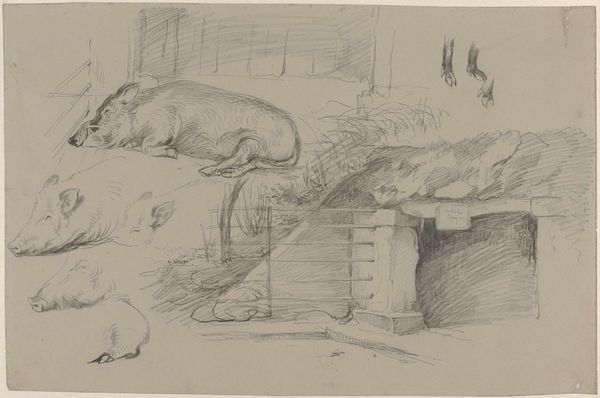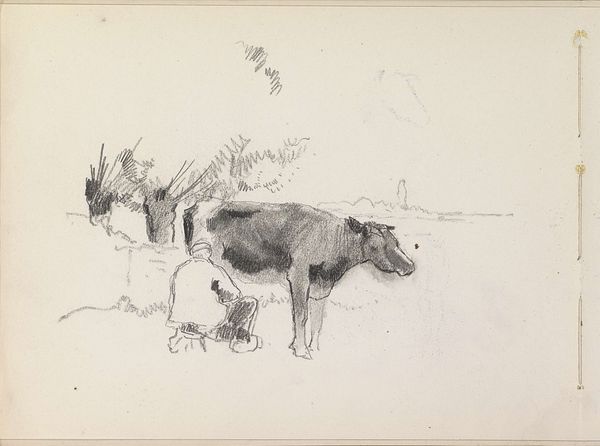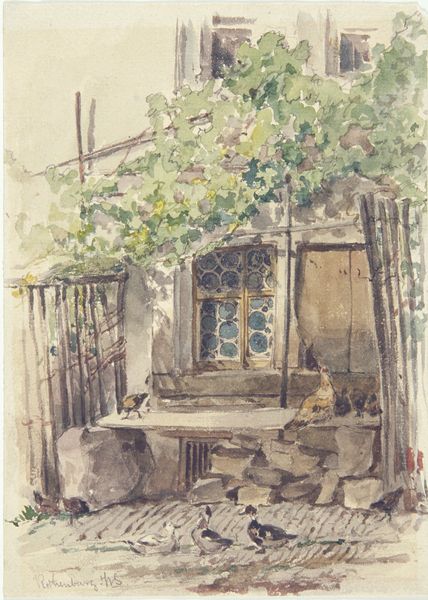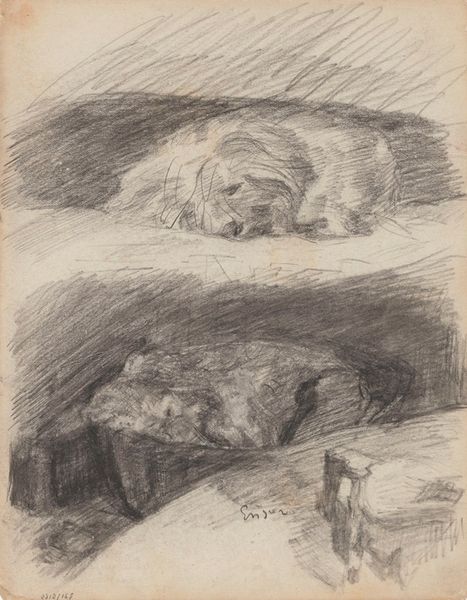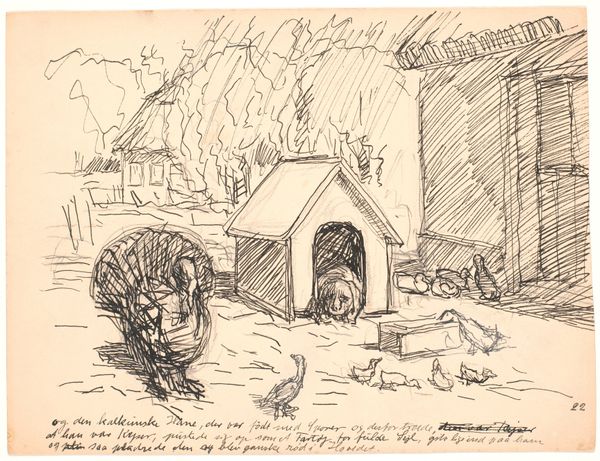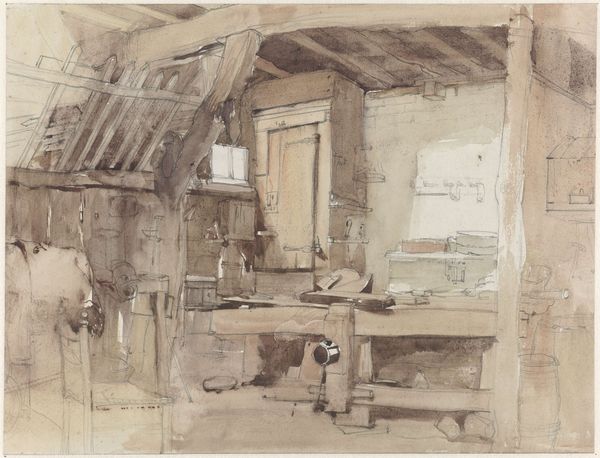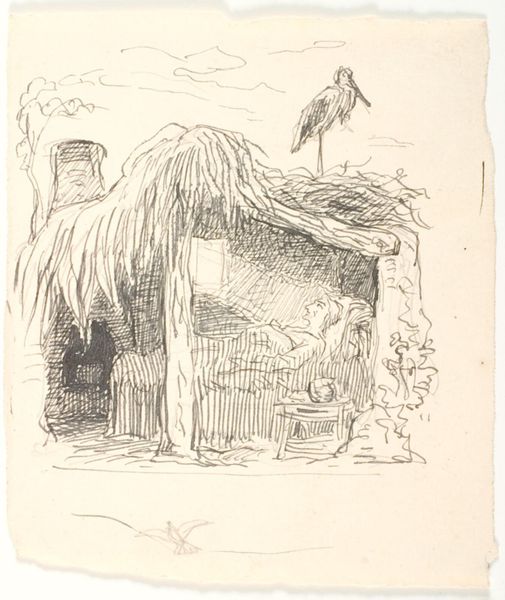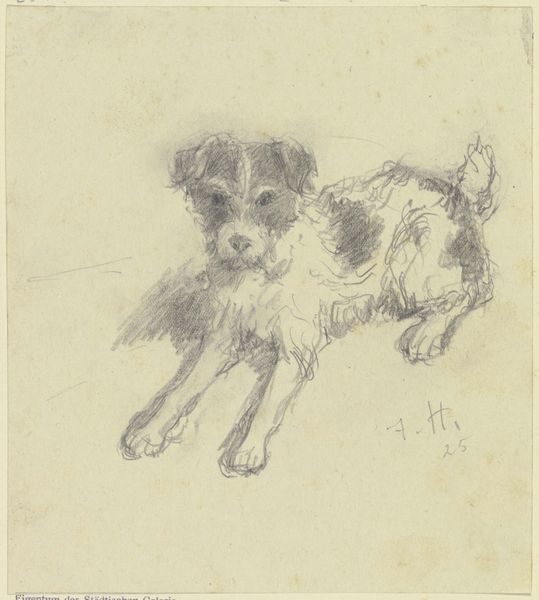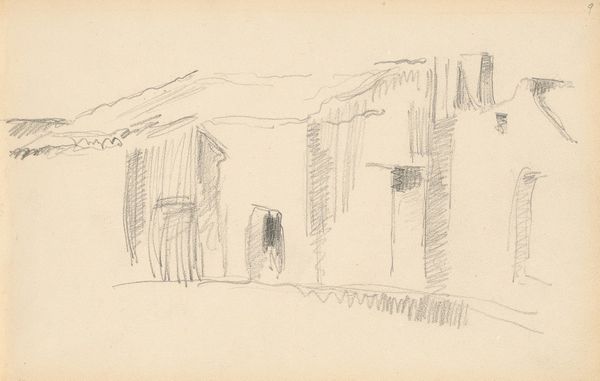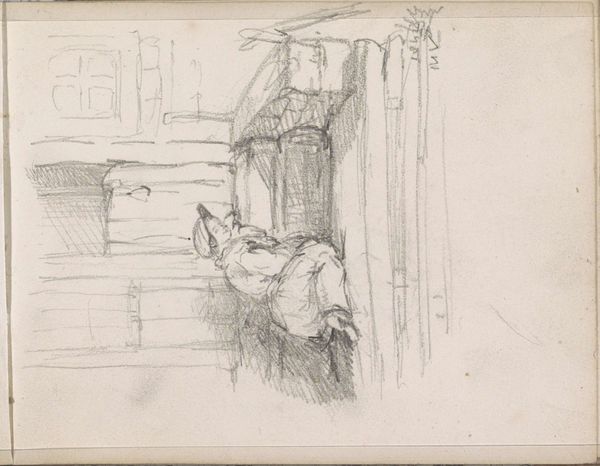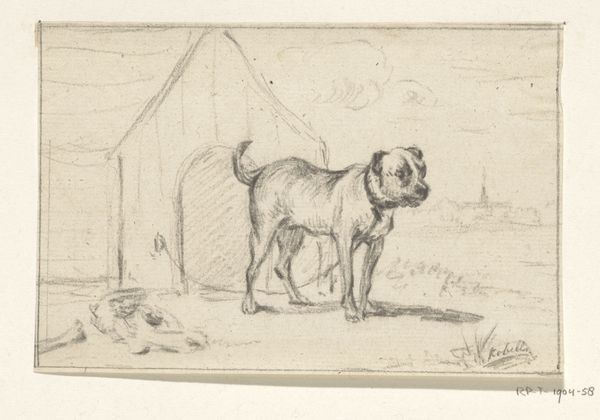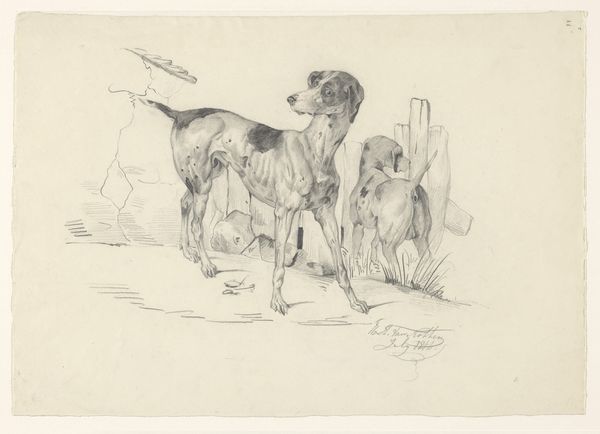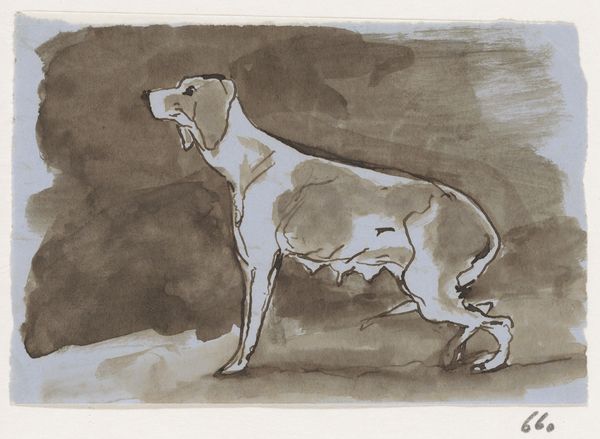
watercolor
#
animal
#
dog
#
landscape
#
watercolor
#
watercolour illustration
#
genre-painting
#
watercolor
#
realism
Dimensions: height 208 mm, width 241 mm
Copyright: Rijks Museum: Open Domain
Curator: Here at the Rijksmuseum, we have "Hond, aangelijnd zittend voor zijn hok", which translates to "Dog, Leashed, Sitting in Front of his Kennel." Jan van Essen created this genre painting with watercolor sometime between 1864 and 1936. Editor: The muted colors and sketchy lines give it such a melancholic feel. There’s a real weight to the dog’s posture, almost as if the very material is conveying a sense of oppression. Curator: The leashed dog as a metaphor resonates powerfully when considered within historical power dynamics. Animals are often positioned in society as inferior, paralleling similar dehumanizing categorizations across lines of race, gender, and ability. The artist is presenting an image that compels a discussion of class and status. Editor: And that leash is key to that understanding, literally defining the parameters of the dog’s labor. Notice the doghouse too – quite rudimentary. The materials employed underscore a working-class context. Who made the dog house and how does that influence the narrative? Curator: Considering this as a moment captured during a period marked by industrial and colonial expansion, it allows for a richer engagement. The confinement depicted in the image could symbolize forms of socio-political constraint. The composition—dog, house, leash—speak to social themes of obedience, duty, and perhaps, resistance. Editor: Right, but also there is the mundane. Dogs provided specific types of labor at the time – turning spits in kitchens, protecting livestock. A leashed dog, though perhaps symbolic of constraint, might simply speak to animal husbandry of the era. Van Essen shows the materiality of working life—the kennel a constructed space of both refuge and control. Curator: Yes, and perhaps by showing this “ordinary” scene, the artist implicates us in a passive acceptance of inequity. Art allows us to question such social practices. Where do we see ourselves on that leash, who constructs our kennels? Editor: Indeed. Ultimately, the artist shows us not only an animal but how it is rendered within a nexus of material, labor and representation. Curator: Yes. Jan van Essen’s watercolor evokes themes of oppression, labor, and social position still very relevant to discussions happening today. Editor: Agreed. And in its deceptively simple watercolor depiction, we gain insights into both historical context and artistic production, pushing viewers to think about larger themes of class and coercion.
Comments
No comments
Be the first to comment and join the conversation on the ultimate creative platform.
